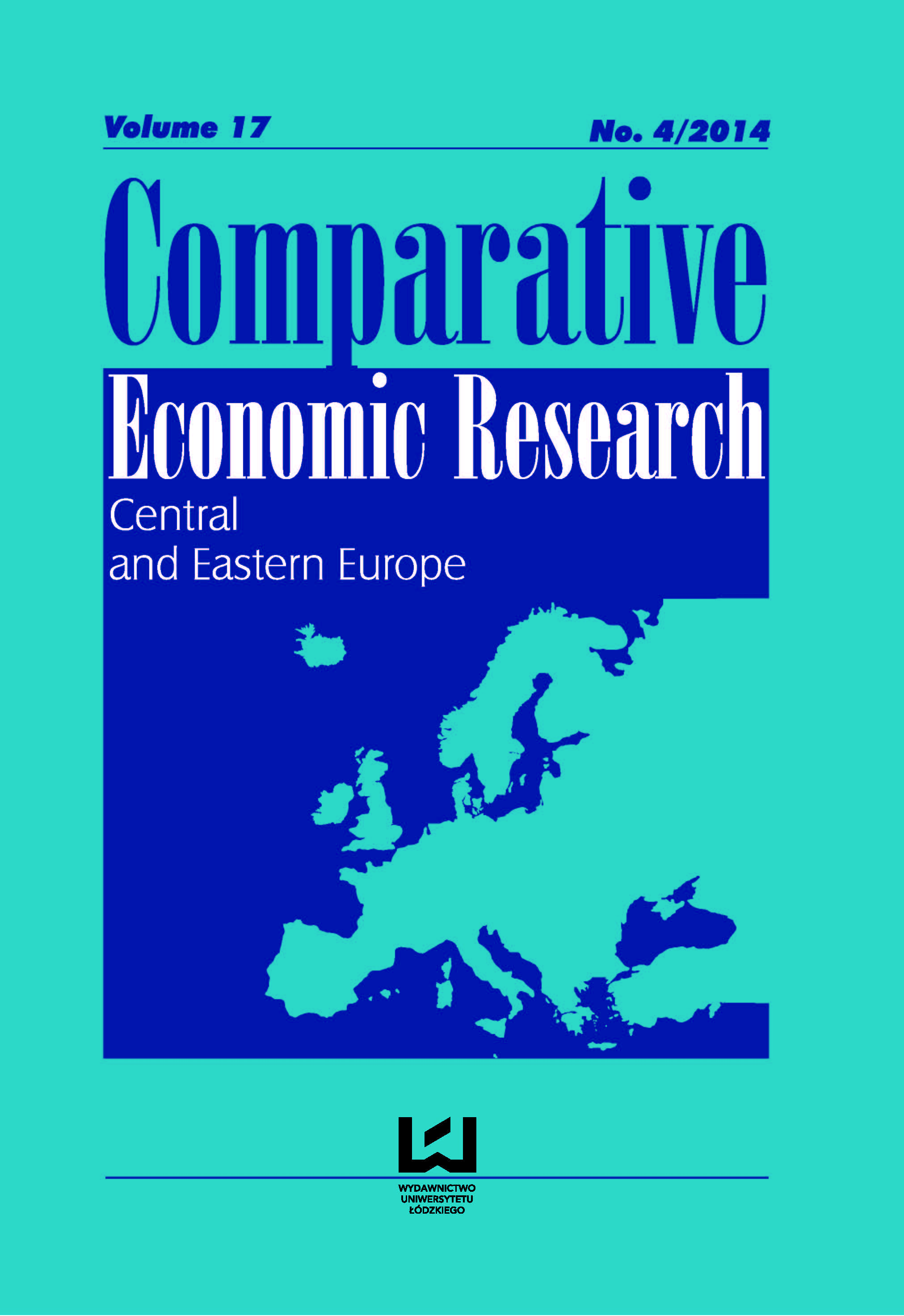Spatial Analysis Of Foreign Migration In Poland In 2012 Using Geographically Weighted Regression
DOI:
https://doi.org/10.2478/cer-2014-0037Keywords:
spatial analysis, GIS, GWR, emigration, immigrationAbstract
Migration has a principal influence on countries’ population changes. Thus, the issues connected with the causes, effects and directions of people’s movements are a common topic of political and academic discussions. The aim of this paper is to analyse the spatial distribution of officially registered foreign migration in Poland in 2012. GIS tools are implemented for data visualization and statistical analysis. Geographically weighted regression (GWR) is used to estimate the impact of unemployment, wages and other socioeconomic variables on the foreign emigration and immigration measure. GWR provides spatially varying estimates of model parameters that can be presented on a map, giving a useful graphical representation of spatially varying relationships.
Downloads
References
Benson T., Chamberlin J., Rhinehart I. (2005), An investigation of the spatial determinants of the local prevalence of poverty in rural Malawi, Food Policy no. 30.
Google Scholar
Bonifazi C., Okólski M., Schoorl J., Simon P. (2008), International Migration in Europe. New Trends and New Methods of Analysis, ʻIMISCOE Researchʼ, Amsterdam University Press.
Google Scholar
Brunsdon C., Fotheringham S., Charlton M. (1996), Geographically Weighted Regression: A Method for Exploring Spatial Nonstationarity, ʻGeographical Analysisʼ, vol. 28, no. 4.
Google Scholar
Brunsdon C., Fotheringham A., Chambers M. (1997), Measuring spatial variations in relationships with geographically weighted regression, [in:] Fischer M., Getis A. (eds.) Recent developments in Spatial Analysis, Springer-Verlag, London.
Google Scholar
Brunsdon C., Fotheringham A., Chambers M. (2002), Geographically Weighted Regression: The Analysis of Spatially Varying Relationships, Wiley, United Kingdom.
Google Scholar
Byrne G., Pezić A. (2004), Modelling internal migration drivers with geographically weighted regression, Australian Population Association, Proceedings of the 12th Biennial Conference of the Australian Population Association, 15-17 September 2004, Canberra.
Google Scholar
Cellmer R. (2013), The Use of the Geographically Weighted Regression for the Real Estate Market Analysis, ʻFolia Oeconomica Stetinensiaʼ no. 11 (1).
Google Scholar
Charlton M., Fotheringham S. (2009), Geographically weighted regression. White paper, National Centre for Geocomputation National University of Ireland Maynooth, http://gwr.nuim.ie/downloads/GWR_WhitePaper.pdf (Accessed on 24 May 2014).
Google Scholar
Comber A.J., Brunsdon C., Radburn R. (2011), A spatial analysis of variations in health access: linking geography, socio-economic status and access perceptions, ʻInternational Journal of Health Geographicsʼ, no. 10 (44).21787394
Google Scholar
Foody G.M. (2003), Geographical weighting as a further refinement to regression modelling: An example focused on the NDVI-rainfall relationship, Remote Sensing of the Environment no. 88 (3).
Google Scholar
Gilbert A., Chakraborty J. (2011), Using geographically weighted regression for environmental justice analysis: Cumulative cancer risks from air toxics in Florida, Social Science Research no. 40 (1). doi: 10.1016/j.ssresearch.2010.08.006
Google Scholar
Główny Urząd Statystyczny (2013), Informacja o rozmiarach i kierunkach emigracji z Polski w latach 2004-2012, GUS, Departament Badań Demograficznych i Rynku Pracy, Warszawa.
Google Scholar
Jensen T., Deller S. (2007), Spatial Modeling of the Migration of Older People with a Focus on Amenities, ʻThe Review of Regional Studiesʼ, no. 37 (3).
Google Scholar
Jivraj S., Brown M., Finney N. (2013), Modelling Spatial Variation in the Determinants of Neighbourhood Family Migration in England with Geographically Weighted Regression, ʻApplied Spatial Analysis and Policyʼ, no. 6 (4).
Google Scholar
Kisiala W. (2013), Wykorzystanie geograficznie ważonej regresji do analizy czynników kształtujących zapotrzebowanie na świadczenia przedszpitalnego ratownictwa medycznego, ʻPrzegląd Geograficznyʼ, no. 85 (2).
Google Scholar
Lo C.P. (2008), Population Estimation Using Geographically Weighted Regression, GIScience & Remote Sensing no. 45(2).
Google Scholar
Matthews S.A., Yang T.C. (2012), Mapping the results of local statistics: Using geographically weighted regression, ʻDemographic Researchʼ, no.26/6.
Google Scholar
McMillen D. (1996), One hundred fifty years of land values in Chicago: A nonparametric approach, ʻJournal of Urban Economicsʼ, no. 40.
Google Scholar
Mennis J. (2006), Mapping the Results of Geographically Weighted Regression, ʻThe Cartographic Journalʼ, vol. 43, no. 2.
Google Scholar
Nakaya T., Fotheringham A.S., Brunsdon C., Charlton M. (2005), Geographically weighted Poisson regression for disease association mapping, ʻStatistics in Medicineʼ, no. 24(17).
Google Scholar
Partridge M.D., Rickman D.S. (2007), Persistent pockets of extreme American Poverty and Job Growth: Is There a Place-Based Policy Role?, ʻJournal of Agricultural and Resource Economicsʼ, no. 32 (1).
Google Scholar
Young L.J., Gotway C.A. (2010), Using geostatistical methods in the analysis of public health data: The final frontier? geoENV VII - Geostatistics for Environmental Applications no. 16.
Google Scholar
Yu D-L, Wei Y.D., Wu C. (2007), Modeling spatial dimensions of housing prices in Milwaukee, ʻWI. Environment and Planning B: Planning and Designʼ, no. 34 (6).
Google Scholar
Downloads
Published
How to Cite
Issue
Section
License

This work is licensed under a Creative Commons Attribution-NonCommercial-NoDerivatives 4.0 International License.











